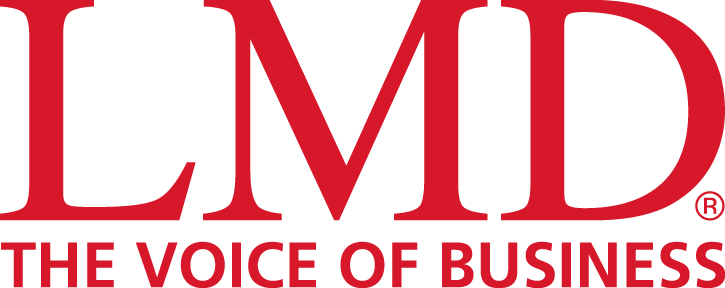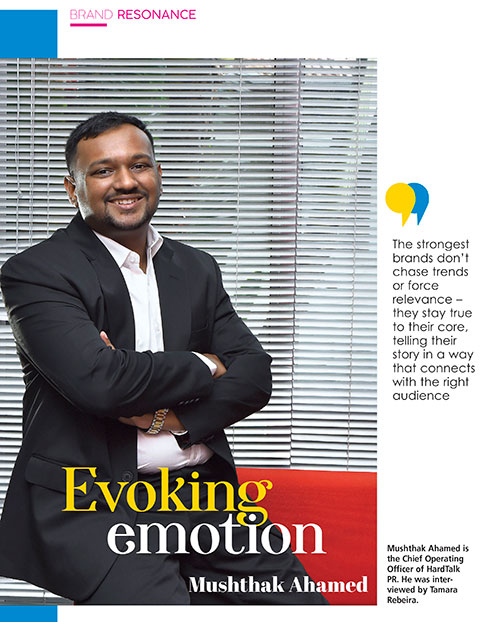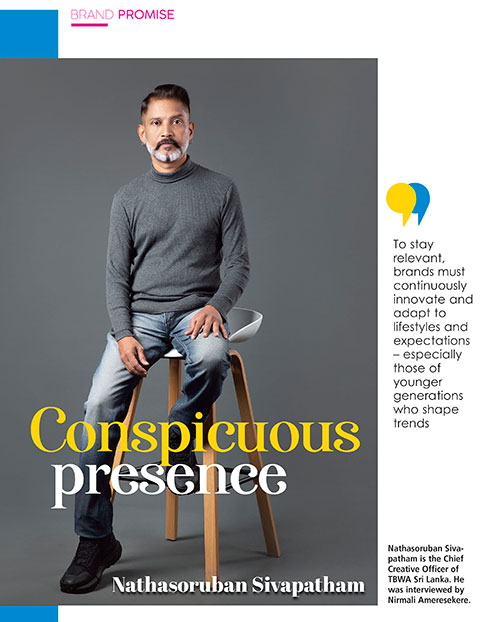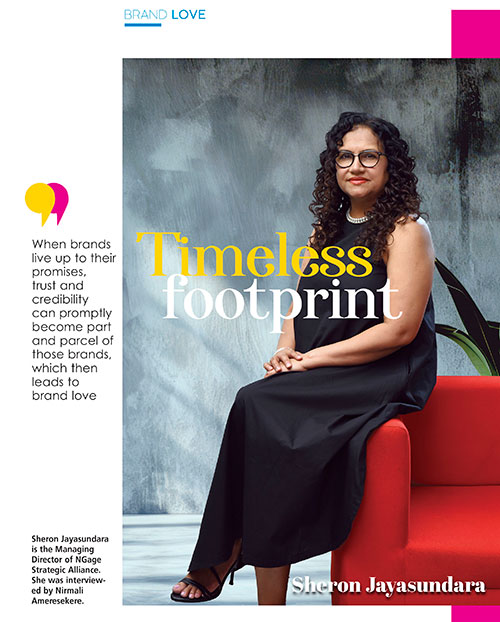BRAND SYNERGY
Unlocking creativity
Bratheepa Emmanuel
Q: In today’s competitive landscape, what challenges do businesses face when developing a brand identity?
A: Brand identity is more than simply a logo or tagline; it’s the unique personality and values that set a brand apart. It encompasses visual elements, tone of voice and the overall perception a brand wants to create in the consumers’ minds.
However, in today’s rapidly changing market, maintaining a distinct and recognisable brand identity is challenging.
Local consumers are navigating immense economic and social pressures, leading to cluttered and distracted minds. This environment makes it difficult for brands to persuade consumers effectively as their attention is divided among numerous competing messages. As a result, the intended impact of brand identity may not resonate as strongly as businesses hope.
Maintaining consistency in brand communications is tough, especially when advertising budgets are under pressure.
In a market where businesses are compelled to focus on immediate sales and performance driven campaigns, long-term brand building efforts often take a backseat. This focus on short-term gains can detract from the effort needed to cultivate a meaningful brand identity.
Moreover, in such a competitive environment, many brands tend to replicate each other’s strategies instead of fostering authentic brand identities, leading to a lack of differentiation. This dilutes originality, and makes it harder for brands to build a unique and memorable presence in the market.
Q: With AI and automation becoming more prevalent, how can brands maintain the human touch while embracing digital advancements?
A: It’s essential to remember that artificial intelligence is developed and utilised by humans; it serves as a tool to enhance our capabilities rather than replace them. As one insightful quote puts it, “AI won’t replace you; but a human who knows how to use AI smartly will.”
The key is for brands to integrate artificial intelligence as a tool that complements human expertise rather than replaces it. In advertising for instance, while AI can analyse data and predict trends, it can’t replace the human imagination that drives compelling storytelling and innovative campaigns.
It enhances the thinking process by providing insights, automation and efficiency that free up time for deeper strategic and creative work. However, it cannot replicate the emotional depth, cultural understanding and storytelling abilities that make branding truly impactful.
Brands must use AI to support human creativity. The most successful companies will be those that blend automation with authentic human experiences. By embracing it as a tool rather than a substitute, brands can enhance efficiency while preserving the emotional and creative essence that makes them truly memorable.
Q: What are the most effective marketing channels for building brand presence today?
A: A widely accepted principle in modern marketing is to prioritise reach and leverage integrated marketing channels.
According to professor of marketing science Byron Sharp, it’s to go for reach and use integrated marketing channels. Brands grow by reaching as many potential buyers as possible across multiple touchpoints, making integration a key factor in success.
That said, one-size-fits-all isn’t the answer. Sometimes, the most unexpected or seemingly ineffective medium can drive the most impact – especially when paired with a strong creative idea and the right execution.
The effectiveness of a channel depends on the campaign objective, creative concept and customer segment. What works for one brand or campaign may not necessarily work for another.
This is precisely where businesses need media planners. Choosing the right mix of channels isn’t simply about following trends; it’s about understanding audiences, balancing efficiency with creativity and making sure the brand message lands in the most impactful way.
The right combination of platforms – traditional, digital or even unconventional – can make all the difference in driving both visibility and long-term brand growth.






